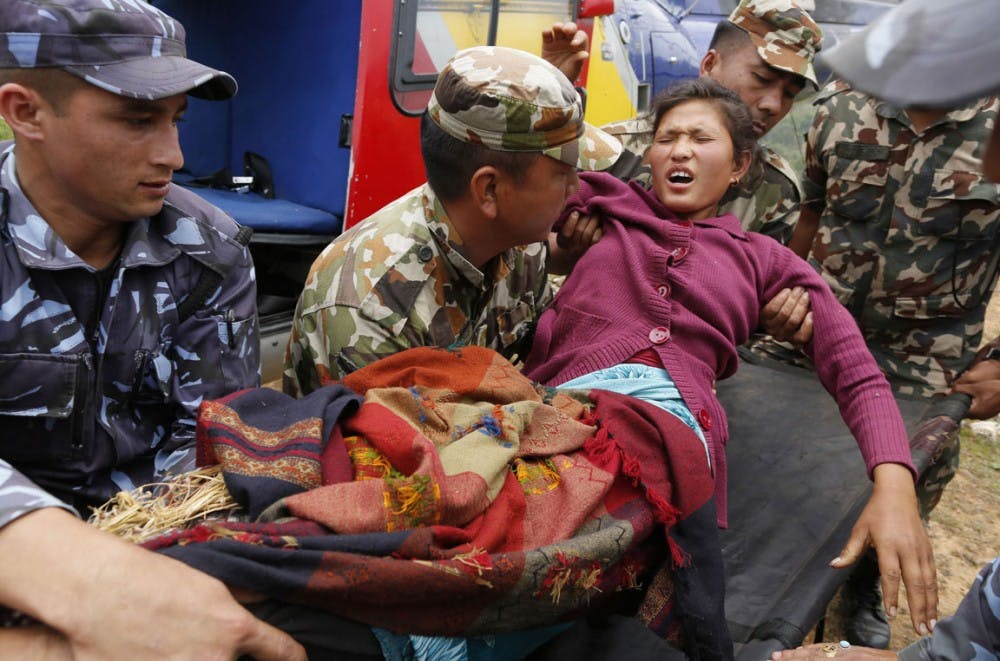By Patrick Neer | Echo
As humanitarian aid pours into Nepal in the wake of Saturday's earthquake, Google and Facebook are working to provide a less tangible but still important resource: peace of mind.
Both tech companies have tools to help reconnect survivors to their loved ones, relay information about supply needs in different areas of the country and facilitate communication within the recovering nation.
On Saturday, Mark Zuckerberg released Facebook's Safety Check, a simple program that sends notifications to people in disaster-stricken areas, allowing them to relay their safety to their Facebook friends with a click of a button. In Nepal's case, Facebook designated the affected area as a 150-mile circle around the epicenter of the earthquake, covering central Nepal and stretching into areas of China and India, according to The Washington Post. When Facebook users log in, they will be prompted to confirm their safety using Safety Check. When they do so, the confirmation is relayed to all of the user's Facebook friends.
"When disasters happen, people need to know their loved ones are safe," Zuckerberg wrote in a Facebook post. "It's moments like this that being able to connect really matters. My thoughts are with everyone who's been caught up in this tragedy."
Meanwhile, Google reopened its Person Finder tool, first used in the wake of the Haitian earthquake in 2010. According to Google, Person Finder allows users to post and search for information regarding missing friends and family-effectively crowdsourcing information about people in the earthquake-stricken area.
Users can create listings for individuals they are looking for or provide information about people who are safe. To preserve privacy, all records are automatically erased 60 days after they're created, according to NPR.
As of Wednesday, the tool was tracking 7,300 unique entries. Though Google's Person Finder isn't the only tool of this sort, it's the largest and most comprehensive database available-sharing information with at least a dozen other similar sites, CNN reported.
Other U.S. companies stepped up to provide aid to Nepal in their own way. Sprint, AT&T and T-Mobile all waived fees for any calls or texts sent by Nepali users. Similarly, Microsoft announced free Skype calls to landlines in Nepal.
All of these efforts highlight the ways social media and the Internet can be used to bring people together following disasters. But for less-developed countries like Nepal, the limits of technology are evident.
Nepal's Internet infrastructure is one of the least developed in the region, according to a report from the United Nations Economic and Social Commission for Asia and the Pacific (ESCAP). The recent earthquake has only made that situation worse.
Even in regions where the Internet is readily available, such as the more heavily developed Kathmandu Valley, usage patterns differ. Facebook only has 4.4 million users in Nepal, severely limiting the number of people reached with its Safety Check, reported The Washington Post. Cell phone usage is also less prevalent in Nepal, further complicating communications with affected rural areas
According to a report from The World Bank, Nepal only has 77 cell subscriptions per 100 people. Putting that in perspective, the U.S. and UK have 96 and 125 cell subscriptions per 100 people respectively.
In Nepal's capital, Kathmandu, NPR's Kirk Siegler reported that the local phone services in the area have been erratic at best.
Saturday's quake is the largest that Nepal has faced since 1934. The most recent quake measured a 7.8 on the Richter scale, according to the United States Geological Society (USGS).
As rescue efforts push into more remote areas, the official death toll continues to rise. It has grown to over 5,000, with an additional 8,000 citizens wounded, according to Al-Jazeera.
The first nations to respond were neighboring India, China and Pakistan-each sending military cargo planes full of relief supplies and rescue personnel to Kathmandu, Al-Jazeera reported.
Jeanette Sutton, a disaster sociologist and assistant professor at University of Kentucky, affirmed the emerging role of tech and social media in addressing disasters in a statement given to the San Jose Mercury News.
"It used to be that the only way we could provide assistance was going physically to a place and bringing donations. But now people who have tech skills or have an interest in helping can get online," she said.





